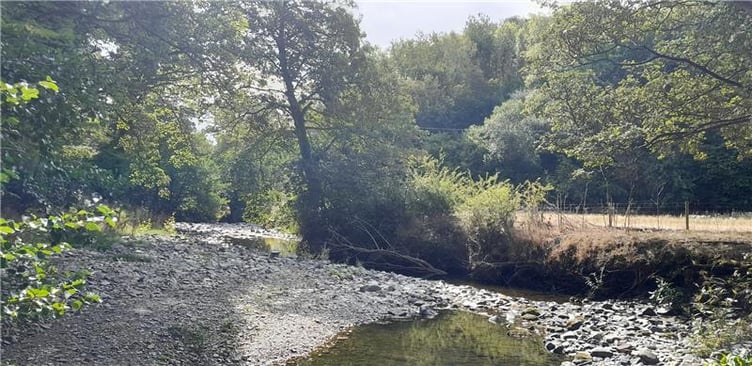Drought status has been declared across Gwynedd.
Natural Resources Wales (NRW) declared on Friday, 29 August that Arfon, Dwyfor and Meirionnydd - along with other areas of north Wales - have entered drought status.
The status was shared with a meeting of the Welsh Government’s Drought Liaison Group, where the latest hydrological data and the wider implications of low river flows and groundwater levels was considered.
In north Wales, more reports are being received about streams drying up and fish found in distress.
NRW’s decision to move north Wales to drought status is a consideration of these impacts on the environment, agriculture and land management.
Water companies confirm drinking water supplies remain safe, and Dŵr Cymru Welsh Water confirms there are no plans for any temporary use (hosepipe) bans. People and businesses are advised to follow advice from Dŵr Cymru Welsh Water and Hafren Dyfrdwy, and continue to use water wisely to help ease pressures on the environment as well as water supplies.
Ben Wilson, Principal Advisor, from Natural Resources Wales said: “Rainfall this week will provide some welcome respite for our environment, land and wildlife, but it will take many months, and more consistent rainfall for our environment to fully recover.
“The six-month period between February and July was the driest since the drought of 1976, and has placed extreme pressure on our rivers, groundwaters, agriculture and wildlife. In some areas, this has caused river flows and groundwater levels to drop below historic lows.
“As we head into autumn, we continue to keep a close eye on weather forecasts, river flows and groundwater levels, as well as responding to reports of environmental incidents caused by the drought. We remain in close contact with the Welsh Government, water companies and other partners to provide a full picture of conditions across the country.”
Other impacts of the drought include the drying of private water supplies in some areas, impacts on land management, tree planting, navigation and recreations and farmers needing to seek alternative livestock watering supplies and supplementary feeding due to reduced grass growth and the loss of recently planted trees.
Local areas affected by the move to drought status include Arfon, Dwyfor and Meirionydd.
As of 26 August, Wales had only received 22.43 per cent of the monthly average rainfall.
The majority of river flows across Wales are therefore low or exceptionally low, as are groundwater levels.
Ben added: “As climate change accelerates, summers in the UK are expected to become drier, and extreme weather events will become more frequent and intense.
“While essential water supplies remain safe, we’re urging people to think carefully about their own water usage in the home and at work, to protect supplies for the environment as well as public water supplies.
“If people are out and about enjoying the last of the summer holidays and see signs of environmental incidents – such as dry river beds, fish in distress or pollution – they should report it via our online incident form or call our 24-hour hotline on 0300 065 3000.”

.jpeg?width=209&height=140&crop=209:145,smart&quality=75)



Comments
This article has no comments yet. Be the first to leave a comment.